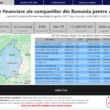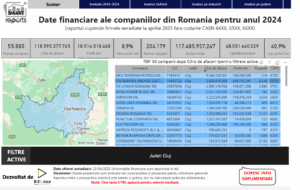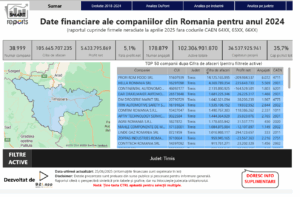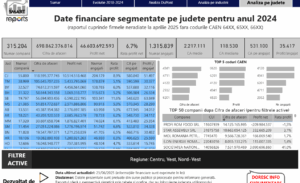- Continuing areas of uncertainty include ongoing high inflation, increases in interest rates, lack of debt and equity capital as well as refinancing of existing assets
- With still too many moving parts and an unclear outlook, market liquidity is very low
- Debt finance is scarce for new and re-development which, with high inflation and construction costs, risks progress with the ESG agenda and repurposing of existing buildings
- The office market is entering a period of disruption described by some as ‘similar to that experienced by retail’
Emerging Trends in Real Estate® Global Outlook 2023 sets out global real estate sector leaders’ expectations for the year ahead. The report from the Urban Land Institute (ULI) and PwC is a key indicator of sentiment in global real estate and investment and development trends across the globe.
According to global industry leaders, the economic outlook for real estate contains major areas of uncertainty driven by ongoing increases in interest rates and lack of debt and equity capital available, resulting in low liquidity, concerns about refinancing of existing loans and a ‘wait and see’ mode across the industry. A key question is whether rental growth can be delivered against a background of stagnant economies, declining consumer sentiment, ongoing structural change and increasing capex requirements.
The full consequences of central banks’ monetary tightening and rising interest rates have still to play out, but the rush of withdrawals from private open-ended funds by institutional and retail investors has troubled real estate leaders. For institutional investors, the withdrawal is partly a response to the “denominator effect”, but these funds represent a relatively liquid investment, and the rush to the exit is evidence of investor concerns.
The biggest obstacle to getting deals done in 2023 is uncertainty over where and when interest rates will settle, following which more clarity will appear on real estate pricing. With the general expectation that interest rates will stay higher for longer, the current price discovery challenge – amounting for some to a “phoney war” between buyers and sellers – is exacerbated by low investment volumes and low liquidity. Logistics seems to have largely re-priced in major markets and hope that long-standing structural changes have now been priced in for retail is increasing, but huge uncertainty remains over office markets.
Debt finance is integral to a functioning investment market and increasing liquidity, but banks are in “wait and see” mode and it remains to be seen whether non-bank lenders will seize opportunities and plug the funding gap. Finance is scarce for new and re-development, where high construction costs, labour shortages and uncertain occupier demand add too much risk for most banks. As existing loans are refinanced, distress on the scale of the global financial crisis is not expected, but many investors will feel the pain. At the same time, there is a huge need for repurposing and accelerating the ESG agenda, not the least to maintain buildings and earn rental income, and this puts the industry in a tough position, as it may no longer be possible to postpone upgrades and capex investments.
This challenge is especially prevalent for offices and there is a strong sense that the sector will experience similar disruption to retail. Most industry leaders are working on the assumption that office occupancy will trend downwards and they share a strong belief in “bifurcation” between prime and secondary, ESG compliant and non-compliant.
Retail itself is showing encouraging signs of life. Investment managers note strong operational performance in their retail portfolios in the US and Europe, and not just in the relatively resilient sub-sectors like convenience, grocery and retail parks. Meanwhile, the logistics sector seems to be emerging from the current market malaise stronger than ever with re-pricing in some markets reinforcing the sector’s appeal.
Housing is still unattainable for a growing number of people even though rising interest rates have dampened demand and cooled residential price growth in some markets. The widespread supply-demand imbalance has seen a reallocation of capital resulting in residential overtaking offices to become the largest real estate sector by deal volume since the pandemic. Continuing the trend seen in the last couple of years, with investors increasingly interested in different types of residential, from both an attractive risk/return and social impact perspective, the current market circumstances support a focus on more defensive property types with more reliable recurrent income, including multifamily, senior living and student housing.
The report finds a small but growing interest in carbon pricing as a driver of decarbonisation. Translating carbon emissions into a monetary amount is seen to put them into a language that real estate professionals can understand and change the way companies think. The key variable in carbon pricing identified by the report is price. Carbon taxes applied by governments are generally too low to force change, while carbon prices that companies are setting for themselves are usually higher, clustering around €90 a tonne in Europe. Exceptions closer to academic recommendations are New York’s $268 a tonne and Utrecht’s €875 a tonne.
ULI Europe CEO, Lisette van Doorn, comments: “Real estate leaders are adjusting to interest rates that are expected to stay higher for longer and getting to grips with a new normal of higher finance costs and minimal capital growth. The keys to success – operational management and rental growth – depend on making assets fit for purpose and ESG compliant. The industry can no longer ‘wait and see’, hoping that construction and financing costs will decrease, as occupiers will critically review their total occupancy costs at lease renewal and alignment with their space and ESG strategies is key. A failure to act may imply loss of rental income very soon.”
Gareth Lewis, ETRE Leader, Director at PwC, said: “Redemption requests from open-ended funds point to doubts around current private property valuations, reflecting a disconnect between the public markets and private real estate. The slow speed with which real estate is revalued relative to equities and bonds is causing a problem for institutional investors, especially in the US, Europe and Australia. This denominator effect is taking some institutions very close to their cap on real estate holdings and could impact an important source of investment for the sector.”
Emerging Trends in Real Estate® Global Outlook 2023 was be launched at MIPIM on 14 March 2023. More details of the event are here.
The full report is available on ULI Knowledge Finder here.
Emerging Trends in Real Estate® is jointly sponsored by the Urban Land Institute and PwC. Since 2003, the Urban Land Institute and PwC have collaborated to produce one of the most comprehensive real estate and land use industry reports. PwC is a global network of firms in 158 countries with more than 236,000 people who are committed to delivering quality in assurance, advisory, and tax services. Find out more about PwC at pwc.com.











































